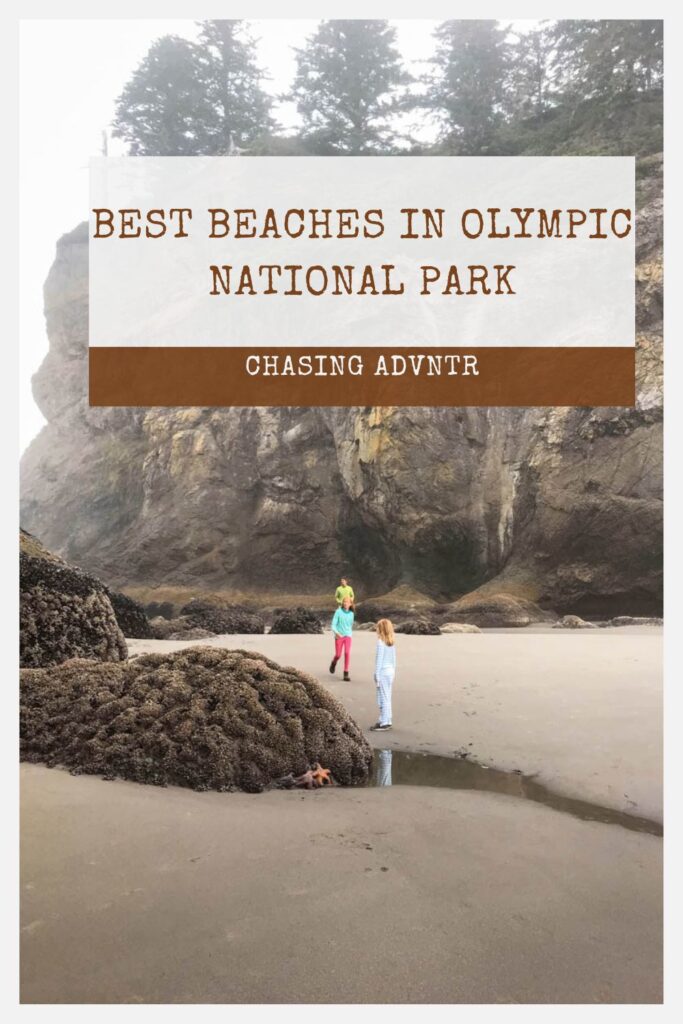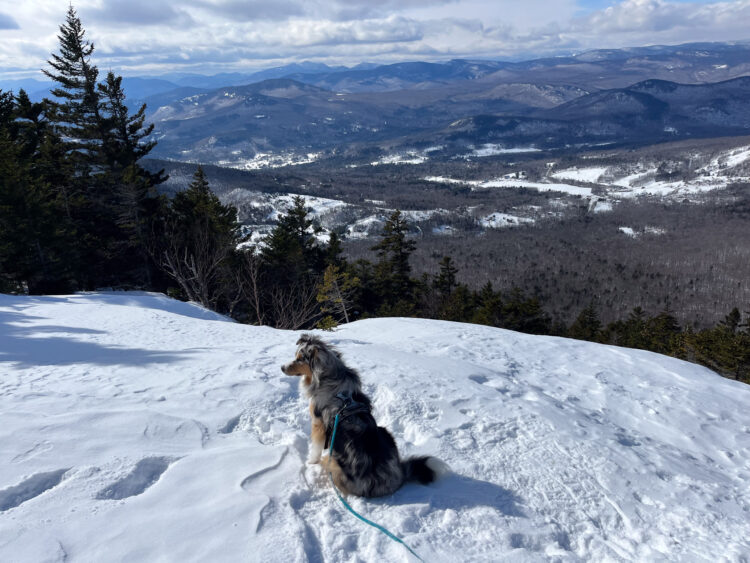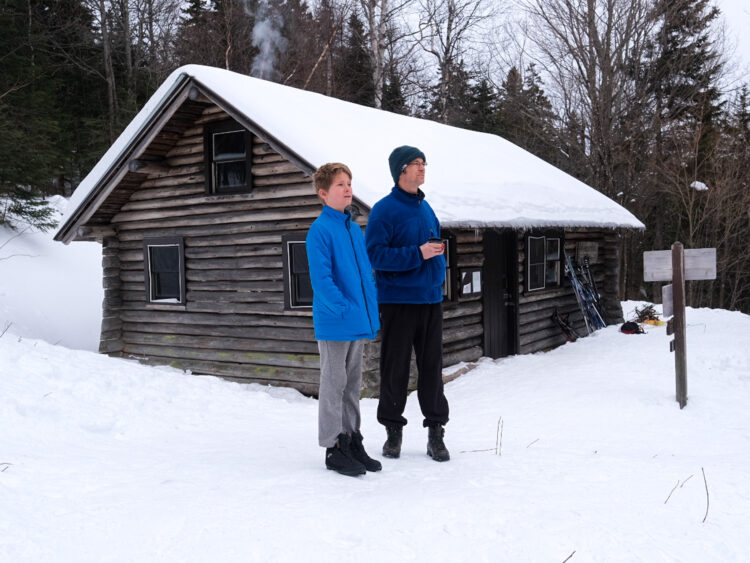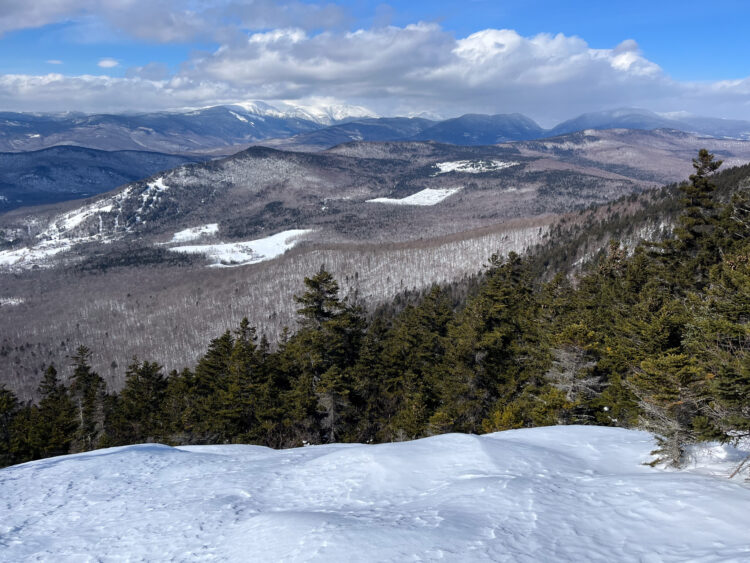Olympic National Park is my favorite US National Park with incredible mountains, a temperature rainforest and gorgeous coastline. One of the best things to do in the park is to spend a day hiking, an afternoon visiting, or a night camping on a beach in Olympic National Park. There are so many ways to enjoy the coast on the Olympic Peninsula, and there are many amazing beaches in Olympic National Park.
Below you can find information to help you plan your visit to the beaches, or you can check out our 2 Day Olympic National Park itinerary or Olympic Park Planning Guide.
NOTE: Several of these beaches are not officially within Olympic National Park

Overview of Olympic National Park
Olympic National Park is a large park located in the northwest corner of the contiguous United States. The park has several different sections and the easiest way to see everything is by car. The coastal section of the park is a thin stretch of the park that runs north-south right along the western edge of the Olympic Peninsula along the Pacific Ocean.
Along the Coastal part of Olympic National Park, there are a number of beaches mostly connected by the Olympic Coast Trail. Some of these beaches can be easily reached by car, while other beaches can only be reached by hiking. If you want to spend more time on the Olympic National Park beaches, several of the beaches are open to camping. Below you can see details on visiting the best beaches in Olympic National Park.
Best Beaches in Olympic National Park
Below you can see general information about the best beaches in Olympic National Park. You can see general information as well as how you can access the beach and whether it is possible to camp at the beach.
If you are looking for some quick recommendations these Olympic National Parks are the best:
Best Beach in Olympic National Park for Camping: Second Beach
Best Beach in Olympic National Park with Easy Access: Rialto Beach
First Beach
Hiking Distance to First Beach: None
Camping: No
Parking at First Beach: Parking lot right at the beach
Highlights of First Beach:
- Piles of driftwood
- River’s Edge Restaurant
- Surfing
- Long beach to explore
A lovely beach made famous from the Twilight movies. You can drive right to the beach and scramble over the driftwood to get to the beach. First Beach is not part of Olympic National Park but is part of the Quileute Nation. Please respect signage.
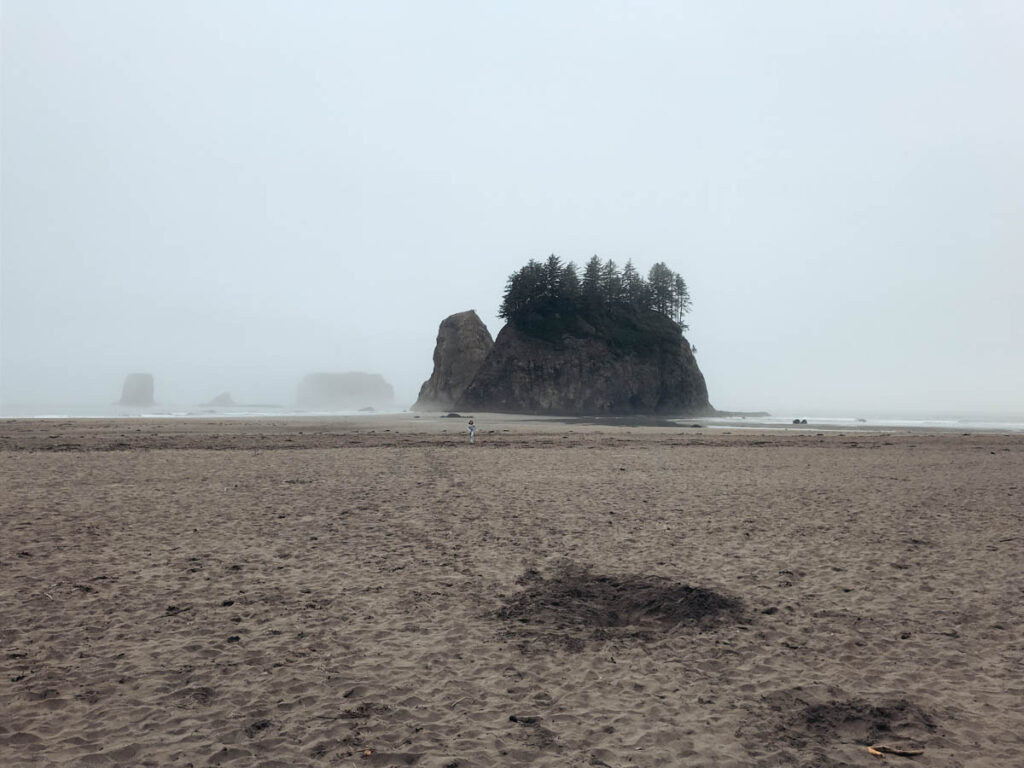
Second Beach
Hiking Distance to Second Beach: 1.4 miles round trip
Camping: Yes
Parking at Second Beach: Small Parking lot
Highlights of Second Beach:
- Amazing sea stacks
- Driftwood
- Long beach for camping
- Basic bathroom facilities
In our opinion, this is the best beach in Olympic National Park. Second Beach can only be reached by hiking under a mile downhill to get to the water. You will find a long stretch of beach, piles of driftwood, and incredible views of the offshore sea stacks. Camping is limited to group of 12 or less and can get crowded during the summer.

Third Beach
Hiking Distance to Third Beach: 2.8 miles round trip
Camping: Yes
Parking at Third Beach: Very Limited
Highlights of Third Beach:
- More secluded beach
- Sea stacks
- Driftwood
To get to Third Beach, you will need to hike 2.8 miles round trip. The beach is beautiful and there are sea stacks offshore and since the hike is long, the beach tends to be less crowded.
Rialto Beach
Hiking Distance to Rialto Beach: none
Camping: Yes
Parking at Rialto Beach: Right at the beach
Highlights of Rialto Beach:
- Hole in the Wall (1 mile)
- Beautiful sea stacks
- Great spot for sunset
- Dogs allowed on leash during the day
This is a beautiful beach that you can drive right to. Consider watching the sunset here or spending the night camping on the beach. The beach is home to the feature called the Hole in the Wall which is about a 1 mile walk down the beach.

Ruby Beach
Hiking Distance to Ruby Beach: 0.5 mile round trip
Camping: No
Parking at Ruby Beach: Parking lot for about 25 cars – you will need to purchase a $25 National Park pass to visit the beach.
Highlights of Ruby Beach:
- Beautiful sea stacks
- driftwood
- tide pooling
- surfing
It is just a short walk from the parking lot to Ruby Beach. Once at the beach you can enjoy gorgeous views, tide pooling and surfing.
Kalaloch Beach
Hiking Distance to Kalaloch Beach: None
Camping: Yes
Parking at Kalaloch Beach: Parking lot and campground
Highlights of Kalaloch Beach:
- Campground and cabins
- Long beach for strolling
- Driftwood
- Tree of Life
- Whale Watching
This is a popular beach with a campground. You can reserve sites through this link. The beach itself is large and a great place to walk and explore. Keep your eyes peeled for whales offshore or stop for a visit at the Tree of Life. To be exact, Kalaloch beach is actually a series of several numbered beaches.

Shi Shi Beach
Hiking Distance to Shi Shi Beach: 2 miles (more to some campsites)
Camping: Yes
Parking at Shi Shi Beach: Parking lot
Highlights of Shi Shi Beach:
- Popular camping beach
- Driftwood
- Basic pit toilet
- Point of the Arches
- Sea stacks
This is a beautiful beach that is reached by an easy 2 mile out and back walk. The path is easy with paths and a boardwalk. To get to Point of the Arches, you will need to walk to the far end (making it an 8 mile hike round trip.
Sand Point
Hiking Distance to Sand Point Beach: 6 mile round trip
Camping: Yes
Parking at Sand Point Beach: Parking lot
Highlights of Sand Point Beach:
- Beautiful hike
- Tide pooling
- Driftwood
This is a more remote beach and gets fewer visitors than some of the other beaches. The hike to get to the beach is part of the fun. You can camp on this beach as well.
Map of the Best Beaches in Olympic National Park
Hiking the Coastal Path
Many of the beaches on the list above are only accessed by hiking. There are several trails that go straight from a parking lot to the beach. Another way to access these beaches and even link together several different beaches is to hiking along the The Wilderness Coast.
Follow the trail over headlands, along beaches and through the forest. While hiking is easy in some points, there are several areas that are challenging and involve scrambling, and climbing using ropes. Hiking is very tide dependent, so you will want to consult with tide charts before setting out. Below are some general things to know about hiking along the coast:
- Dogs, vehicles, and bikes are not permitted on the park beaches, several of the other beaches allow dogs leashed during the day.
- Trail conditions depend on the tide. Some of the headlands and other areas CAN NOT be passed when the tide is high. It’s best to plan carefully and make sure that your hiking plan takes the tides into account. You can get a topographic map to help plan you hike here. Also note that storms and other conditions can change the tides and make some rivers impassable. Be cautious of moving drift wood. You can find a tide chart here.
- The trails that go along the headlands are marked with red and black marks. Several of these trail sections have a fixed ropes and ladders that help with the steep scrambling to get to the top of the headlands. Sea cliffs are often covered in vegetation and extreme caution should be used along the edges of cliffs.
- There are limited toilets along the coastal hiking trail
- Wildlife – at low tide, there are many amazing sea creatures to see. and you can often see bald eagles and even whales offshore.
- Do not try to hike to the sea stacks offshore.
- Leave-no-trace. Even though you are visiting a beach, it’s still important to practice leave no trace. Do not remove items from the beach, avoid building with the driftwood and pack out all your trash.

How to Camp on a Beach in Olympic National Park
Camping is an amazing experience on a beach in Olympic National Park. Many of the beaches offer camping but you will need to purchase a Wilderness Camping Permits. Visit the National Parks Wilderness Backpacking Reservations page to learn more and get a permit. Camping is a popular activity so be prepared for lots of others and try to get to the beach early to set up your campsite.
Note that the coast can be much cooler than even a few miles inland. You can expect wind and sand.
Campsites: Choose a campsite above the high tide level to avoid an unpleasant night. If you can find a campsite that is somewhat protected.
Campfires: Campfires are usually permitted on some of the beaches but should be made only from the wood available (not from the growing vegetation on the shoreline). Fires should be kept away from wood on the beach and made below the high tide zone.
Animals: Racoons and bears are common along the coast and will try to eat your food at night. Food must be stored in a bear canisters. You can see more information here: Wilderness Food Storage.
Packing: Packing for camping on the beach in Olympic National Park is straightforward. You should plan to bring general backpacking camping gear. You may be able to leave behind a sleeping pad. The biggest different about camping on a beach is – well – the sand! We ended up with sand everywhere. If possible bring a towel that can be used at the tent entrance to dust the sand off your feet. If there is any chance of windy conditions, cooking can be challenging with lots of sand, so keep it simple.

General Things to Know About Visiting the Coast of Olympic National Park
Below are a few general things to know about visiting this part of the Olympic National Park.
Crowds – the beaches in Olympic National Park are beautiful and popular and are often crowded. Parking lots do fill up – when possible, try to visit the parks early in the day or later in the afternoon.
Weather – the best time to visit the Olympic National Park beaches is during the warm season. Even during the summer, the coast is often much cooler than just a few miles inland, It is not uncommon for a fog bank to sit right on the coast making it cool, wet and windy.
Safety – Read the hiking section of this above, but while the coast is beautiful it can often be dangerous with changing conditions and tides. Follow all signage carefully.
Where to Stay – If you aren’t camping on the coast, you can also plan to stay in one of the nearby towns and visit a beach in Olympic National Park on a day trip. Look at staying Forks or Port Angeles, or you can find several campgrounds in the inland rainforest.

Common Questions About the Best Beaches in Olympic National Park
What is the best beach in Olympic National Forest?
The best beach in Olympic National Park depend on how much time you have and whether you plan to spend the night. Our favorite beaches are Second Beach and Rialto Beach. We also love Ruby beach in the southern part of the coastline.
Can you swim in Olympic National Park beach?
You can generally swim at most of the beaches. The water is shockingly cold and you should use caution with any moving driftwood and rip tides.
What is the best beach trail in Olympic National Park?
The best trail in the coast is generally considered the walk to Hole in the Wall – this is actually a walk down the beach so not really a traditional hiking trail. This walk has lovely views while some of the other walks to get to the beach in Olympic National Park are through the woods without views.
